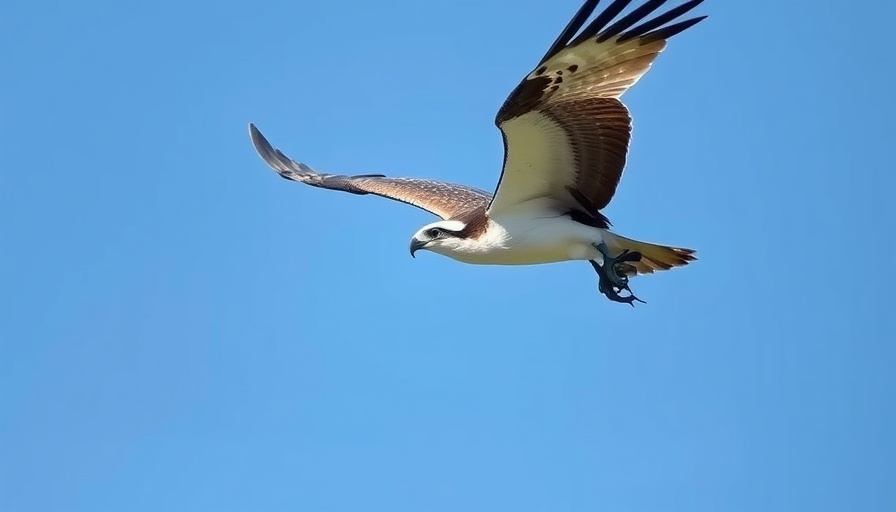
Revisiting the Osprey’s Conservation Success Story
The osprey, a stunning fish-eating bird, is often highlighted as one of America's great conservation triumphs. Once teetering on the edge of extinction due to pesticide use, particularly DDT, they made a remarkable comeback after the chemical's ban in 1972. With their populations soaring into the thousands, the raptor's nesting and feeding habits have become critical indicators of ecological health around the Chesapeake Bay.
The Unraveling Connection: Ospreys and Menhaden
However, there’s a troubling trend emerging: recent reports indicate that ospreys in the Chesapeake are failing to produce enough chicks, which raises alarms among conservationists and biologists alike. Bryan Watts, a prominent biologist at the Center for Conservation Biology at the College of William & Mary, has been monitoring these flying hunters and asserts that the decline of menhaden, a vital food source, is largely to blame. Reports show that ospreys need an average of 1.15 chicks to sustain their populations, but recently, many breeding pairs are only successfully raising less than half that number, particularly in areas where menhaden numbers have dwindled dramatically.
The Clash of Interests: Conservation vs. Industry
This alarming situation ties back into a larger debate within environmental and fishing communities. The fishing industry, which harvests billions of pounds of menhaden annually for various uses, maintains that their practices are sustainable and that other factors could explain the decline in osprey chicks. Yet, Watts advocates for precautionary measures in fishing management, underscoring the necessity of balancing ecological considerations with economic interests. 'The ospreys are sending us clear signals, and it’s imperative we listen,' Watts emphasizes.
Looking Ahead: A Call for Action
As we navigate this complex conversation, understanding the interconnectedness of species and their environments is vital. Protecting the health of osprey populations not only represents a commitment to biodiversity but also serves as a critical reminder of the influence of human activity on natural ecosystems. Addressing the decline of menhaden and the resulting impacts on ospreys will require the collaboration of conservationists, fishermen, and policymakers alike. Whether you're a local wildlife enthusiast or simply interested in your environment, it's crucial to engage with these issues and advocate for sustainable practices that benefit both wildlife and communities.
 Add Row
Add Row  Add
Add 




Write A Comment